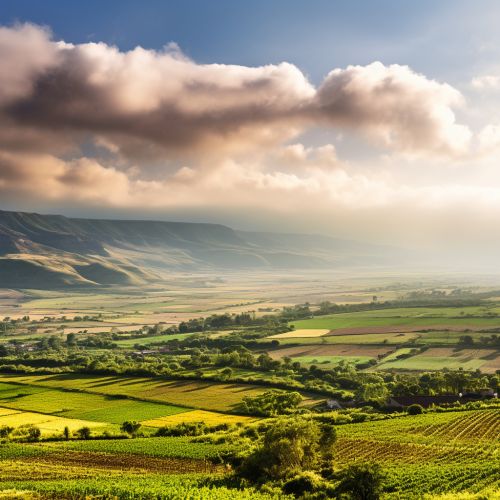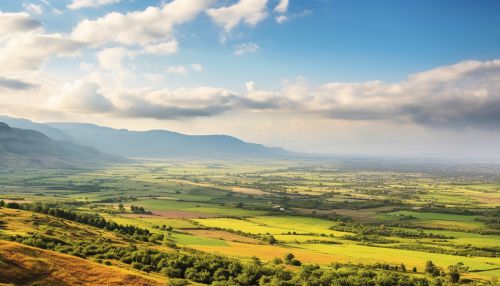Golan Heights
Geography
The Golan Heights, also known as simply the Golan or the Syrian Golan, is a region in the Levant, spanning about 1,800 square kilometers. The area is recognized internationally as part of Syria, but has been occupied and administered by Israel since the Six-Day War in 1967. It was later annexed by Israel in 1981, a move not recognized by the international community, including the United Nations.


The Golan Heights is characterized by high-altitude, volcanic plateaus and mountains. It is bordered by the Yarmouk River in the south, the Sea of Galilee and Hula Valley in the west, Mount Hermon in the north, and the Raqqad Wadi in the east. The western two-thirds of this region are currently occupied by Israel, while the eastern third is controlled by Syria.
History
The history of the Golan Heights can be traced back to the ancient times. It was inhabited by various civilizations, including the Canaanites, Israelites, Arameans, Assyrians, Babylonians, Persians, Greeks, Romans, Byzantines, and Arabs. The region was also part of the Ottoman Empire before becoming a French mandate following World War I. It was later incorporated into the independent state of Syria in 1944.
The Golan Heights became a strategic battleground during the Arab-Israeli conflict. It was captured by Israel during the Six-Day War in 1967 and was the site of major battles in the 1973 Yom Kippur War. In 1981, Israel unilaterally annexed the Golan Heights, a move that was condemned by the United Nations and is not recognized by the international community.
Demographics
As of 2019, the Golan Heights has a population of about 50,000, comprising Israeli settlers and the native Druze and Alawite Arab communities. The Israeli settlers live in agricultural communities, while the Druze and Alawite Arabs reside in a handful of villages in the northern part of the region. The Druze in the Golan have been offered Israeli citizenship, but most have rejected it, choosing to retain their Syrian citizenship.
Economy
The economy of the Golan Heights is primarily based on agriculture and tourism. The region is known for its fertile soil and favorable climate, making it ideal for growing a variety of crops, including apples, grapes, cherries, and olives. It is also home to several wineries that produce internationally acclaimed wines.
Tourism is another major industry in the Golan Heights, with its natural beauty, historical sites, and outdoor recreational activities attracting visitors from around the world. Popular tourist destinations include the Mount Hermon ski resort, the Banias Nature Reserve, and the ancient city of Gamla.
Politics and International Relations
The political status of the Golan Heights remains a contentious issue. Israel's annexation of the region has been widely condemned by the international community, and the United Nations has issued several resolutions calling for Israel to withdraw from the Golan Heights. However, Israel maintains that the Golan Heights is vital to its security and has expressed its intention to retain control over the area.
In recent years, the Golan Heights has also been impacted by the Syrian civil war, with occasional spillover violence and humanitarian issues arising from the conflict.
